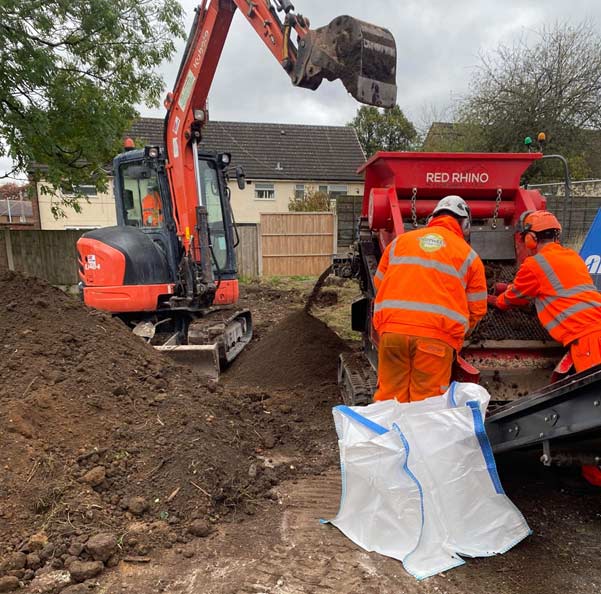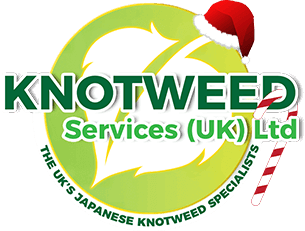JAPANESE KNOTWEED REMOVAL Richmond
7
LIVE KNOTWEED JOBS IN Richmond
74
SUCCESSFUL KNOTWEED REMOVAL PROJECTS IN Richmond
100%
SUCCESSFUL PROPERTY SALES AFTER TREATMENT
2
Richmond BASED KNOTWEED STAFF
Japanese Knotweed Removal and Treatment in Richmond
As one of the leading Japanese knotweed providers Richmond, Knotweed Services has dedicated inspectors living and working in the area. And because we’re local, we can ensure fast, economical removal of this troublesome weed.
Knotweed Services is a member of the PCA, a group accredited by the government which is dedicated to providing the best treatments and removal methods for Japanese knotweed.
Knotweed Services, we are a company with the goal to help people with knotweed problems. We have completed large and complex eradications in and around Richmond and England.
Japanese Knotweed: The Reality
Knotweed Services has extensive experience in all areas of Japanese knotweed management. If you’re a home owner and concerned about whether your mortgage provider will lend against your property, we can help by carrying out a survey and providing you with the management plan you need to move your sale or purchase forward.
If knotweed is found on your land, your project may be delayed until the knotweed infestation is properly handled.
How Does Japanese Knotweed Spread
- Japanese knotweed can grow through tarmac and concrete, posing a threat to your building or property.
- In some instances mortgage lenders will not lend on a property that has been affected by Japanese Knotweed.
- Knotweed obstructs paths, highways, and other infrastructure with large, dense patches. The weed is a particular problem for commercial properties—both in terms of dealing with the plants themselves and the access that is blocked by them.
For customers in Richmond with Japanese knotweed, we should be your very first call. We’ll always ensure that the knotweed is removed in its entirety and our warranty guarantees against re-infection and knotweed colonosation.



FREE IDENTIFICATION
Fill in the form below, attach your pictures and we’ll let you know if the plant in your picture is Japanese Knotweed.
Call us ASAP to start the treatment and control of your infestation in Richmond
Call us on: 0121 725 6348 or 0800 689 4146 for an swift idea on cost
Knotweed Services will guide you through the process from the point of initial contact until we handle everything for you.
RESIDENTIAL JAPANESE KNOTWEED REMOVAL Richmond.
WHAT YOU NEED TO KNOW ABOUT JAPANESE KNOTWEED REMOVAL Richmond
Knotweed services vary greatly. If a Japanese knotweed infestation is severe, you may need one method of removal or a combination of multiple methods.
As this is nature we are dealing with, our Japanese Knotweed specialists factor in all considerations when choosing the method of treatment. An Insurance backed guarantee is available.
— JAPANESE KNOTWEED REMOVAL OPTIONS AVAILABLE IN Richmond

FOLIAR SPRAYING *
Foliar spraying is the most common treatment for Japanese knotweed. We ensure that other plants aren’t damaged while treating Japanese knotweed, and perform foliar spraying in the springtime.

FOLIAR LEAF WIPING *
With this treatment for Japanese knotweed, we use a tool to “physically wipe” our chemicals onto the plant’s leaves. Because of the accuracy of this application, we frequently allow a higher chemical concentration.

STEM INJECTION
We directly administer a measured amount of herbicide to the invasive weed. Due to the injection directly into the Japanese Knotweed, this is the most ingenious elimination technique. It is not affected by the weather.

BIOMASS REDUCTION
Biomass is a form of excavation and removal but instead of extracting all of the soil impacted by Japanese Knotweed, we only remove the infested parts of the soil. It’s an excellent Japanese Knotweed control method that allows the reuse of the soil. Reducing the use of landfill.

CROWN REMOVAL
Crown and stems are capable of regenerating and even small fragments of cut crown or stem are capable of regenerating and becoming a new invasive weed – removing these from the equation is a great strategy.
— COMMERCIAL TREATMENT OPTIONS AVAILABLE IN Richmond

SOIL SCREENING
A tried-and-true technique applied to hundreds of sites around the UK
The rhizome material from Japanese knotweed is removed from the soil material using the screening technique. After that, the Japanese knotweed waste is either moved to a permitted landfill at a significantly lower disposal rate or burned on the spot under a D6 exemption from the Environment Agency or Natural Resources Wales.
In order to avoid getting in the way of construction, the cleansed soils can subsequently be utilised elsewhere, typically in soft landscaping areas.
Due to fewer truck travels to the landfill, this can greatly lower the costs associated with the landfill and the backfill. It can also assist minimise the carbon imprint on the property.

BIOSECURITY SUPERVISION
We could send a biosecurity operative to monitor any excavations or movement of Japanese knotweed-containing soil on your property.
As part of these steps, we can set up a location at the site’s entry where people can wash their boots and machines. We will offer all toolbox discussions for the primary contractor on site, which will be signed by all contractors involved in the operation on site.
We may provide temporary geotextile barriers in situations where biosecurity is necessary.
We will present the client with a comprehensive biosecurity report once the service is concluded.
This procedure can be used in conjunction with other on-site treatment options.

EXCAVATION AND DISPOSAL
This treatment method is ideal where time constraints are present and there’s no other option other than to remove both the Japanese Knotweed and contaminated soil to a registered landfill.
By removing all traces of the infestation quickly, this offers a rapid solution to your problem and allows your commercial project to begin groundwork’s almost straight away. When time is of the essence, there is no quicker Japanese Knotweed removal/treatment method.
Any waste taken off-site will be done so with a licensed waste carrier to a suitably authorised landfill site.

CELL BURIAL
Cell burial comprises of moving Knotweed contaminated soil from one location on site, burying it in an excavated pit which is lined with a root barrier membrane, in a different position on the site.
The burial requirements for Japanese Knotweed are as follows:
- The Environment Agency recommends that the top of the burial cell should be a minimum of 2 metres below ground level.
- The overall depth of the burial pit should be in excess of 5 metres deep. All root barrier seams are welded together forming an encapsulated cell from which the Japanese Knotweed cannot escape. Clean soil is then used to backfill on top of the cell.
- To prevent accidental disturbance of the burial site, it is recorded on all site plans and future land owners should be made aware of the location.

STOCKPILE & TREAT
Bunding is the method of relocating contaminated Japanese Knotweed soil to a different area of the site being treated. A bund is a shallow area of the contaminated soil, typically 0.5m deep.
The bund can either be raised, on top of the ground, or placed within an excavation to make the surface flush with the surrounding area.
The purpose of the bund is to move the Japanese Knotweed to an area of the site that is not used. This ‘buys time’ for treatment that would not be possible where the Japanese Knotweed was originally located.

HERBICIDE APPLICATION
At Knotweed Services we can provide the client with bespoke treatment plans depending on the locations of the Japanese knotweed.
These plans can work in conjunction with other methods of treatment where access is limited to pedestrian movements i.e., embankments or existing pathways within a site.
This will normally consist of up to 3 visits per annum to apply herbicide by either foliar spray technique or stem injection during the growing season over a period of 3 years, with a monitoring period of 2 years thereafter.
We would select the appropriate herbicides depending on the surrounding foliage or environmental constraints.
After each visit a full treatment record would be provided with photos showing the progress of the works and then an annual report.
